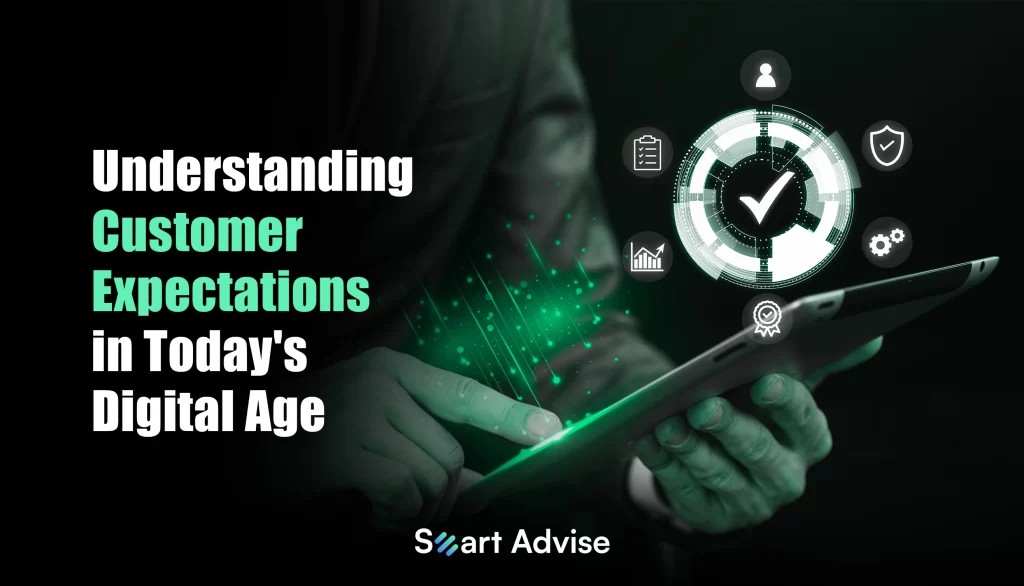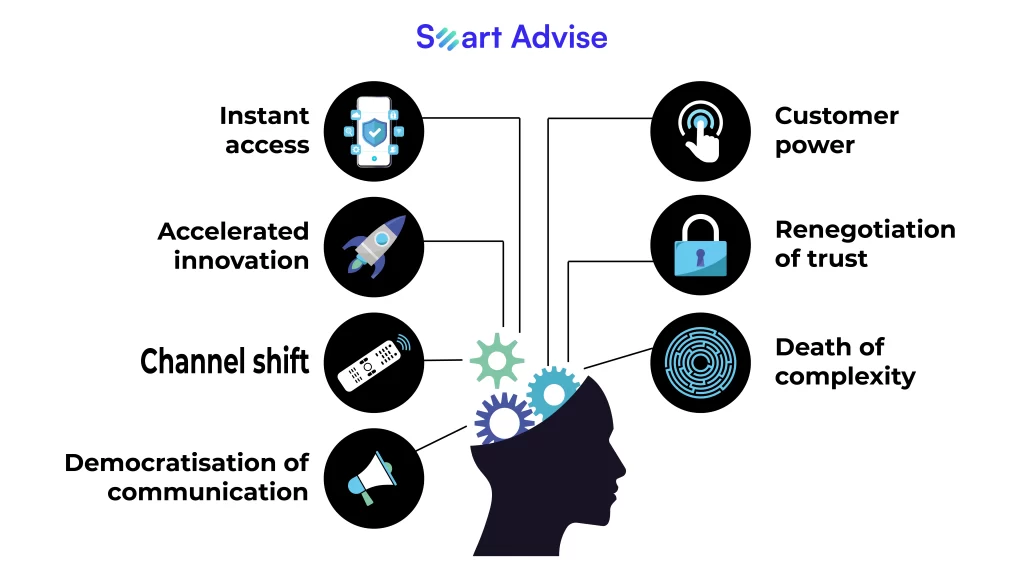
Modern consumers want services to be effortless, provide rapid satisfaction, and tailor interactions to their unique needs. Know more key insights to succeed
The only bellowing that brands do is about consumer insight, but where does it come from? The insights lie under the shadow of the customer’s expectations themselves. Still, brands find themselves at a critical juncture where understanding and meeting customer expectations becomes difficult as they blindly follow the tactics of achieving instant success. The advent of technology, coupled with a shift in consumer behavior, has ushered in a new age where customers demand seamless experiences, instant gratification, and personalized interactions. To grow in this competitive eco-system, it is crucial for businesses to not only acknowledge but also comprehend the intricate web of customer expectations. Read further, as we plumb into the nuances of understanding customer expectations

The Pervasiveness of Digital Influence
Before we delve into the intricacies of customer expectations, it is essential to acknowledge the pervasive influence of digital technology on consumer behavior. According to a recent report by Statista, the number of global digital buyers were expected to reach 2.14 billion in 2021, highlighting the ubiquity of online interactions. This surge in digital interactions has reshaped the customer journey, with consumers seamlessly transitioning between online and offline channels. Businesses need to align their strategies with this digital-first mindset to effectively meet customer expectations.
The Demand for Seamless Experiences
In the digital age, customers expect seamless experiences across all touchpoints, from browsing a website to making a purchase and seeking post-sales support. A study by Salesforce reveals that 73% of consumers expect companies to understand their needs and expectations. This underscores the importance of leveraging technology to create cohesive and integrated customer experiences. Investing in user-friendly interfaces, responsive websites, and intuitive mobile applications is no longer a luxury but a necessity.
Moreover, the rise of omnichannel experiences has added a layer of complexity to customer expectations. According to a survey by Harvard Business Review (Published in sellerapp), 73% of customers use multiple channels during their shopping journey. This emphasizes the need for businesses to ensure a consistent and interconnected experience across various channels, be it social media, email, or in-store interactions.
In the Time of Instant Gratification
In a world where information is just a click away, customers have developed a penchant for instant gratification. A study by Google indicates that 53% of mobile users abandon a site if it takes more than three seconds to load. This impatience extends beyond website loading times and permeates into all aspects of customer interactions. From prompt customer service responses to quick delivery times, businesses need to align their operations with the need for immediacy.
E-commerce giants like Amazon have set the benchmark for expedited delivery, conditioning customers to expect quick turnaround times. According to PwC (Published in Walmart Global Tech), 88% of consumers are willing to pay for same-day or faster delivery. This data underscores the imperative for businesses to optimize their logistics and supply chain processes to meet the growing demand for rapid delivery.
Personalization as a Driving Force
One of the defining characteristics of customer expectations in the digital age is the desire for personalized interactions. According to a report by Accenture, 91% of consumers are more likely to shop with brands that provide relevant offers and recommendations. This necessitates the integration of data analytics and artificial intelligence to glean insights into customer preferences and behavior.
Leading e-commerce platforms leverage machine learning algorithms to curate personalized product recommendations based on individual browsing and purchase history. Both the consumer experience and customer loyalty are improved by this. Businesses that fail to embrace personalization risk being relegated to the sidelines in an era where customers expect tailor-made interactions.
The Role of Trust and Security
As digital transactions become more prevalent, customers place a premium on trust and security. A survey by Edelman reveals that 81% of consumers say trust in a brand is a deal-breaker in their purchasing decision. With data breaches and cyber threats on the rise, businesses must prioritize cybersecurity measures to instill confidence in their customer base.
Transparency regarding data usage and robust security protocols are essential components of building and maintaining trust. Companies that prioritize data privacy and communicate their security measures effectively are more likely to win over discerning customers in the digital age.
Bridging the Generation Gap in Expectations
Understanding customer expectations also involves recognizing the diversity in preferences across different demographic segments. Generational differences play a significant role in shaping expectations. For instance, millennials and Generation Z are more inclined towards digital channels, social media engagement, and sustainability initiatives, while older generations may still prefer traditional modes of communication and service.
As Nielsen states, due to their increasing purchasing power, Millennials have been the demographic that all brands have had to target for the last ten years or more. Digital marketers are starting to pay more attention to Generation Z (Gen Z) now that this generation is well into its adolescent years. This highlights the importance of aligning marketing strategies with the values and preferences of specific age groups.
The Evolution of Customer Feedback
In the digital age, customer feedback has transformed from a sporadic occurrence to a continuous stream of insights. Online reviews, social media comments, and customer ratings provide businesses with valuable data that can be leveraged to refine products and services. A BrightLocal survey indicates that 87% of consumers read online reviews for local businesses, emphasizing the significance of maintaining a positive online reputation.
Businesses that actively engage with customer feedback, whether positive or negative, demonstrate a commitment to improvement and customer satisfaction. Social listening tools and sentiment analysis have become indispensable in gauging the pulse of customer sentiment across digital platforms.
In conclusion,
Wholeheartedly adopting digital change is essential for organizations to effectively tackle the complex task of meeting consumer expectations in the digital age. Businesses that put the consumer first in whatever they do, from designing user-friendly interfaces to placing an emphasis on customization, have a higher chance of succeeding in today’s cutthroat digital market. Looking forward, successful businesses will be characterized by their capacity to adapt and innovate in reaction to changing consumer expectations. And to get close to those adaptivity, connect with us to get value insights!